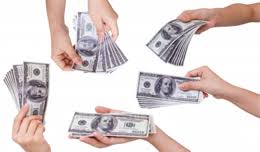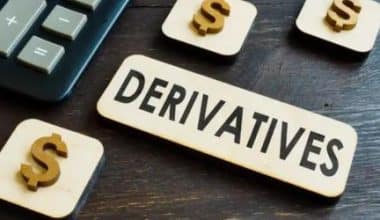When you need more information about how much money you make compared with how much you spend, consult your monthly bank statement. Everybody with a bank account should understand how to obtain a bank statement. Unless you opt for electronic statements, you may receive one in the mail on a monthly or quarterly basis. You may usually check and download current and previous statements from your online account. In this guide, we will walk you through all you need to know about a bank statement and how to get one either online or by mail. Let’s run along!
What is a Bank Statement?
Bank statements are a record of all the credits and debits made to your bank account during a specified time period. The statement may include your bank account number as well as a list of transactions from that statement period, such as direct deposits, debit card purchases, ATM withdrawals, and overdraft fees. The beginning and ending balances of the account for the period may also be shown on the bank statement.
Several banks may allocate monthly statement periods to their bank accounts and deliver monthly statements to you. Accounts with few transactions, such as certificate of deposit accounts (or CDs), may receive quarterly statements.
For deposit accounts (such as checking and savings accounts), banks must normally preserve customer account records for at least five years. Some people keep records for a longer period of time, however, your online banking platform may not have all of your prior statements. If you can’t find a bank statement in your online account, or if you’ve closed your account and no longer have online access, you may be able to request a physical or electronic copy (some banks may charge a fee for the document).
Why Are Bank Statements Essential?
Checking your bank statements on a regular basis will help you keep track of your spending patterns. Utilizing it in conjunction with your credit card statement will help you get a better picture of your finances. And this data can assist you in adjusting your expenditure to support your financial goals and creating a budget.
Examining your financial activities might also assist you in keeping an eye on your accounts for fraudulent or illegal charges. If something doesn’t seem right, you can check your account activity and balance to your personal records and work with the bank to correct any inaccuracies.
Bank statements can also be useful when you need to present proof of income, such as when applying for a mortgage or personal loan.
What Is on a Bank Statement?
The contents of a bank statement differ depending on the financial institution. You may see both your checking and savings accounts in the same report if you have both at the same bank.
The following is typical of a bank statement:
- Account number
- Home address
- Statement period
- Bank’s customer service number
- How to report errors or fraudulent activity
- Beginning balance for the time period
- Deposits (checks, direct deposits, electronic transfers, canceled checks or payments, and reimbursements or credits)
- Withdrawals (purchases and payments, electronic transfers, ATM withdrawals, auto payments, and fees charged by banks)
- Interest or dividends earned
- Ending balance for the time period
You’ll also see a transaction date and the payer or payee name for each item.
Each statement covers a specific time period, such as a fiscal quarter or one month, but it may not start on the first of the month. For example, your statement could be valid from September 6 to October 5.
If you discover any errors on your statement, you should notify your banking institution. You typically have 60 days from the date of the statement to contest any faults or errors. Disputes are usually settled in writing, so make sure to include any supporting paperwork. Your financial institution should collaborate with you to remedy any inaccuracies or fraudulent behavior.
How Can I Get a Bank Statement?
Most banks provide statements monthly; however, some do so quarterly. Depending on your bank, you may be able to access your bank statement online, in-app, or via mail.
How do I get a Bank Statement Online?
Nowadays, most banks provide internet banking for both deposit and credit card accounts. This makes it simple to monitor your account status and transactions, transfer money, and do other banking transactions. You can obtain your bank statement using your online banking account.
For recent months, your statements should be accessible for free download as a PDF. Banks differ in how you receive your statement, but normally there will be a link at the top for “Statements,” potentially under “Account” or “Account Services,” which will provide you access to downloadable, PDF versions of your bank statements. You can select the time window and the account to view. Most banks make your statements instantaneously available, though it’s possible you’ll need to request to have the PDF emailed to you.
In addition to downloadable PDF statements, the main page of your account should have an account summary that lists your most recent transactions. The transactions may be separated out each statement cycle or all together. While this is not your statement and may include some ongoing charges, it is a convenient method to review recent credits and debits from your account.
Most banks allow you to “go paperless,” receiving and reviewing your statements entirely online. If you’ve gone paperless, here is how you’ll access your statements. You should also save and save your statements on a regular basis in case you require convenient access to them in the future.
How to Get Paper Statements by Mail
Some banks will automatically send you monthly statements via mail when you open an account. Your mailed statements will be identical to those available online.
If you opt to go paperless, which means you accept to receive electronic bank statements, banks must still give a physical copy of your statement if you request one. To receive paper statements, sign in to your account via your bank’s website or app first. Search for “account settings” and “services” to see where you can get mailed statements. Because it costs them time, printing, and shipping, some banks charge a fee to mail your statements.
If you don’t know how to log in online, call your bank’s customer support number, which is usually printed on the back of your debit card. If your bank does not have a mailed alternative, you can download your statement as a PDF and print it to obtain a physical copy.
What Can a Bank Statement Be Used For?
Bank statements are useful for a number of reasons. Bank statements are an easy-to-use financial tool for everything from tracking your spending to spotting problems.
The following are the most important things you can do with a bank statement:
#1. Calculate your spending
Keep track of your expenses by reviewing your bank statement on a monthly basis.
#2. Keep track of your savings
Examine your beginning and ending balances over a month or quarter. Keep track of how much you’re accumulating.
#3. Check the amount of interest you’re earning
Check to discover how much money your bank or credit union pays you in interest each month. You may wish to put some of your money in an investment account or money market to earn more interest, depending on how much you make.
#4. Keep an eye on your account balance
Minimize overdraft fees by always having adequate money to cover bills and ATM withdrawals.
#5. Detecting fraud
Examine your statements on a frequent basis to help detect fraudulent activity, such as someone using your debit card. If you discover any fraudulent transactions, call your bank right away.
#6. Detect financial mistakes
Banks make blunders from time to time. If you suspect an error, such as a deposit being made into the wrong account or you being overcharged, contact your bank.
#7. Keep an eye out for errors
If a waiter inadvertently entered $52 into a restaurant credit card machine when your bill was actually $25. Check your bank account for mistakes, duplicate charges, and anomalies.
#8. Request a loan
Whether it’s a personal loan or a mortgage, your lender may require you to present bank statements to show your financial condition.
#9. Lease an apartment
Before signing a lease, a landlord or rental agency may require to see your bank statements.
#10. Refinance your mortgage
If you wish to refinance your property, financial institutions may request many bank statements.
#11. Fill out your tax form
When filing your taxes, you may need to look at your bank statement.
#12. Keep accurate records
Save your statements somewhere safe in case you need them again in the future. You can save them to your computer or print them and save them in a safe place.
How Frequently can I Obtain a Bank Statement?
There is usually no limit to how many bank statements you may review online or how frequently you can download available statements. Nevertheless, each time you request a printed or mailed statement, you may be charged a cost.
Banks are not required to give you a monthly statement for your deposit account if no electronic transfers into or out of the account occurred during the month. Yet, many banks may still generate a monthly statement for checking and savings accounts automatically. But, for other account types, such as CDs or retirement accounts, you may only receive quarterly statements.
How Long Do Banks Keep Records of Statements?
Banks are required to store statements for up to five years under the Bank Security Act. Although some may keep them for a longer period of time. Even if you close your account, the bank will retain your records for at least five years. Why would you require an old bank statement? You may need to get your data for a tax audit, lawsuit, divorce, or loan application.
Bank statements for the previous year or two are frequently available online for free. If you require more than what is provided online, your bank may charge you for each statement. For example, if you want a four-year-old statement, the bank may charge you $5 per statement. That is why some people keep their bank statements for future reference. If you no longer require your statements, trash them for security reasons.
How Long does it take to get a Bank Statement?
Most banks provide statements monthly, however, some do so quarterly. Depending on your bank, you may be able to access your statement online, in-app, or via mail.
Can I go to the Bank and get a Statement?
You can go into a bank branch and request that your statements be printed and stamped as official. Check that all of your bank statements are in chronological order.
How do I get my Bank Statement on my Phone?
To get your bank statement on your phone, you can practice these steps:
- Log in to your account through the bank’s website or app. …
- Find where your bank houses its electronic statements. …
- Select the statement period you want to view.
- Review the statement on your computer, tablet, or phone — or download your statement as a PDF.
How do I get a 3 Month Bank Statement?
Here’s what to do:
- Visit your bank’s website.
- Log in to Online Banking/Digital Banking/Internet Banking/eBanking etc.
- Click ‘statements’, ‘e-documents’, or ‘download’
- Make sure you’ve selected the correct account.
- Choose a statement (or a date range)
- Choose the .pdf file format.
- Download
How do I get a Bank Statement as Proof of Address?
Most banks will accept a bank statement as proof of address as long as it is current. The standard time frame for relevance is three months. Statements are frequently recognized by banks, credit unions, and building societies. Credit card statements, if recent, are also considered a viable option.
What does a Bank Statement Show?
A bank statement is a record from the bank that indicates all activity on your account for a given time period, generally a month. Your bank statement’s activity includes information such as processed deductions and deposits, your average daily balance, and any interest generated.
In conclusion
Bank statements give you a comprehensive view of your financial activity on an ongoing basis. You may manage your spending and save by analyzing your statements and looking for any errors. Most significantly, being conscious of your finances will assist you in achieving your goals and financial well-being.
Related Articles
- FINANCIAL STATEMENT OF A COMPANY: Best 2023 Samples & Templates to Learn From
- WHAT IS AN INCOME TAX: Definition, Rate, and Types
- DIRECT MAIL MARKETING: Everything You Need to Know!!!
- FINANCIAL REPORTING: All You Need to Know With Examples (+ Quick Easy Tools)
- PERSONAL FINANCIAL STATEMENT: Meaning, Importance & Examples






